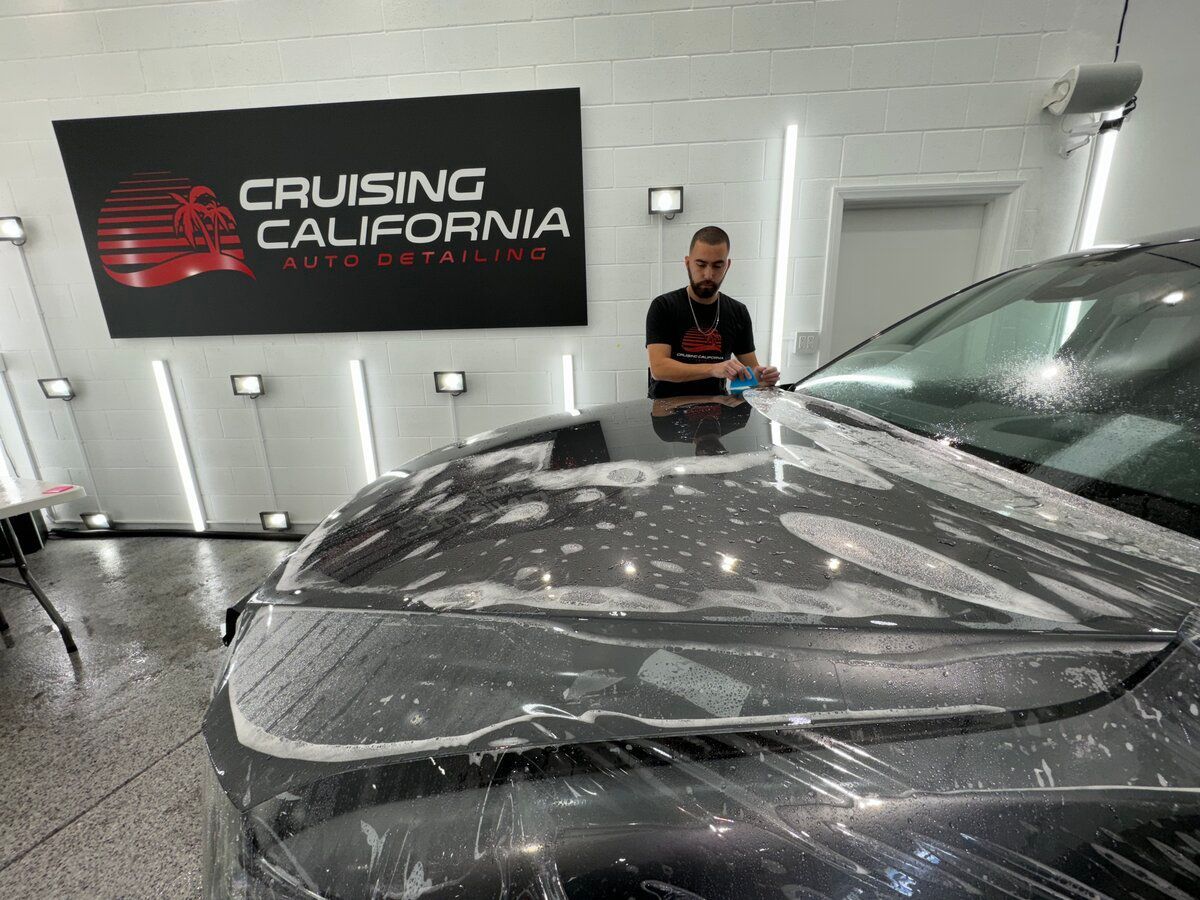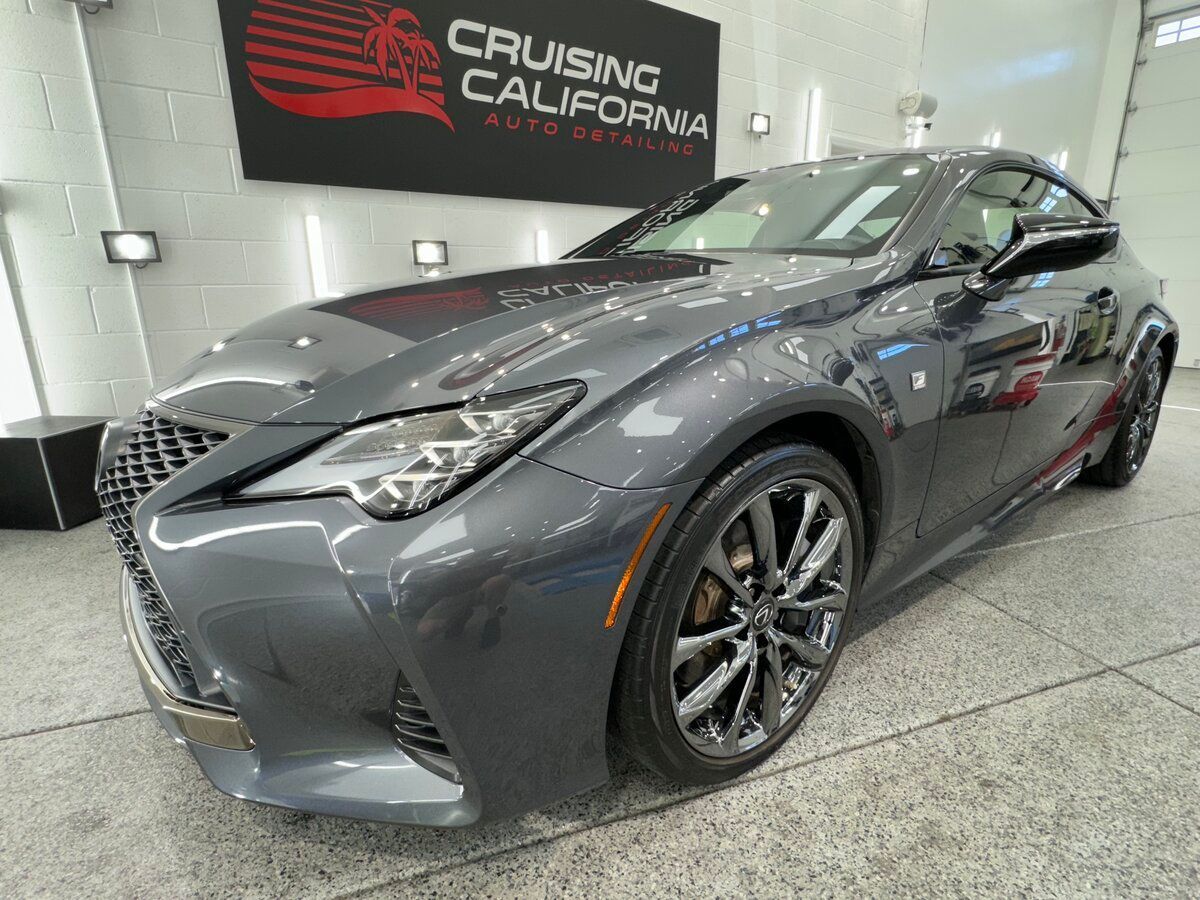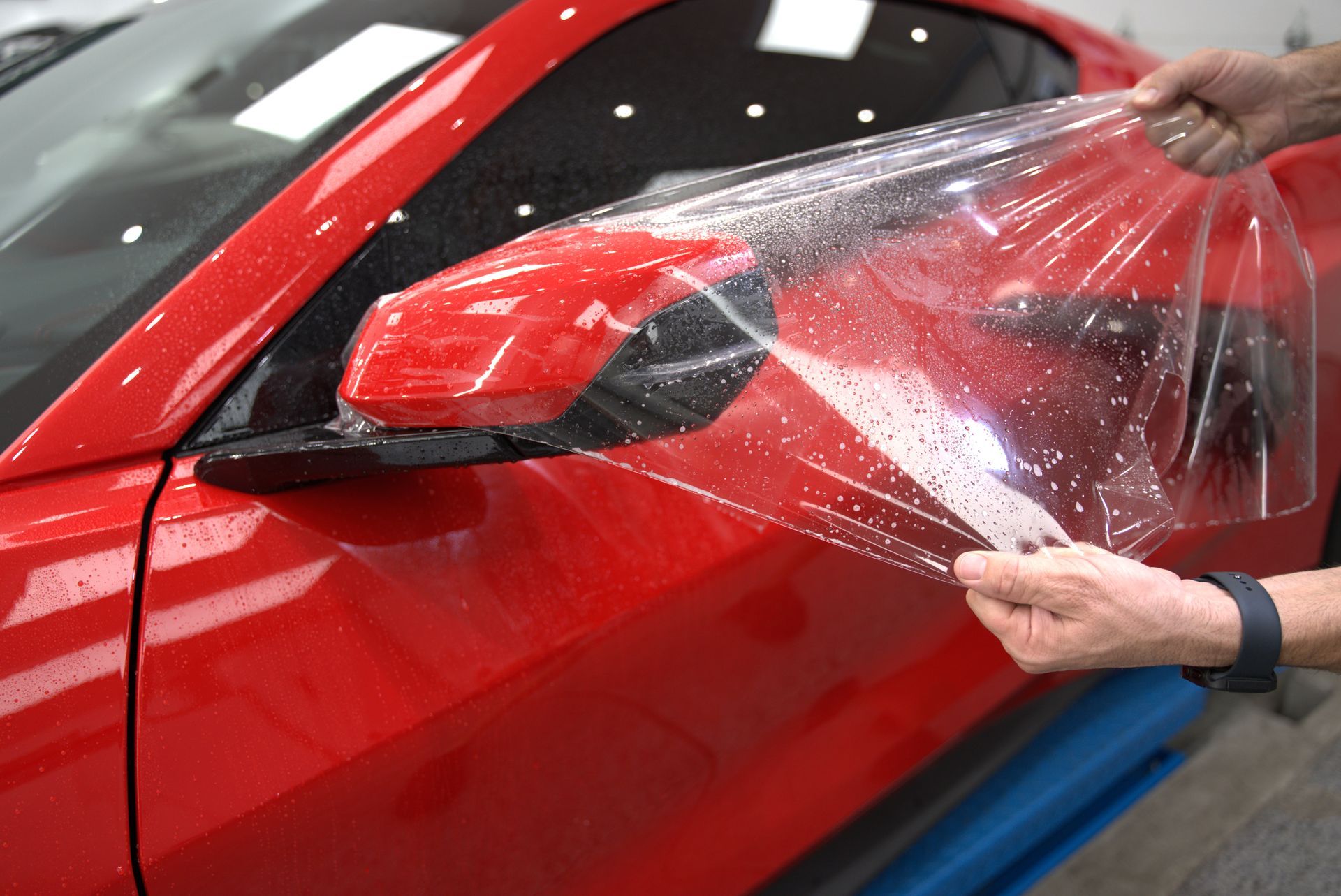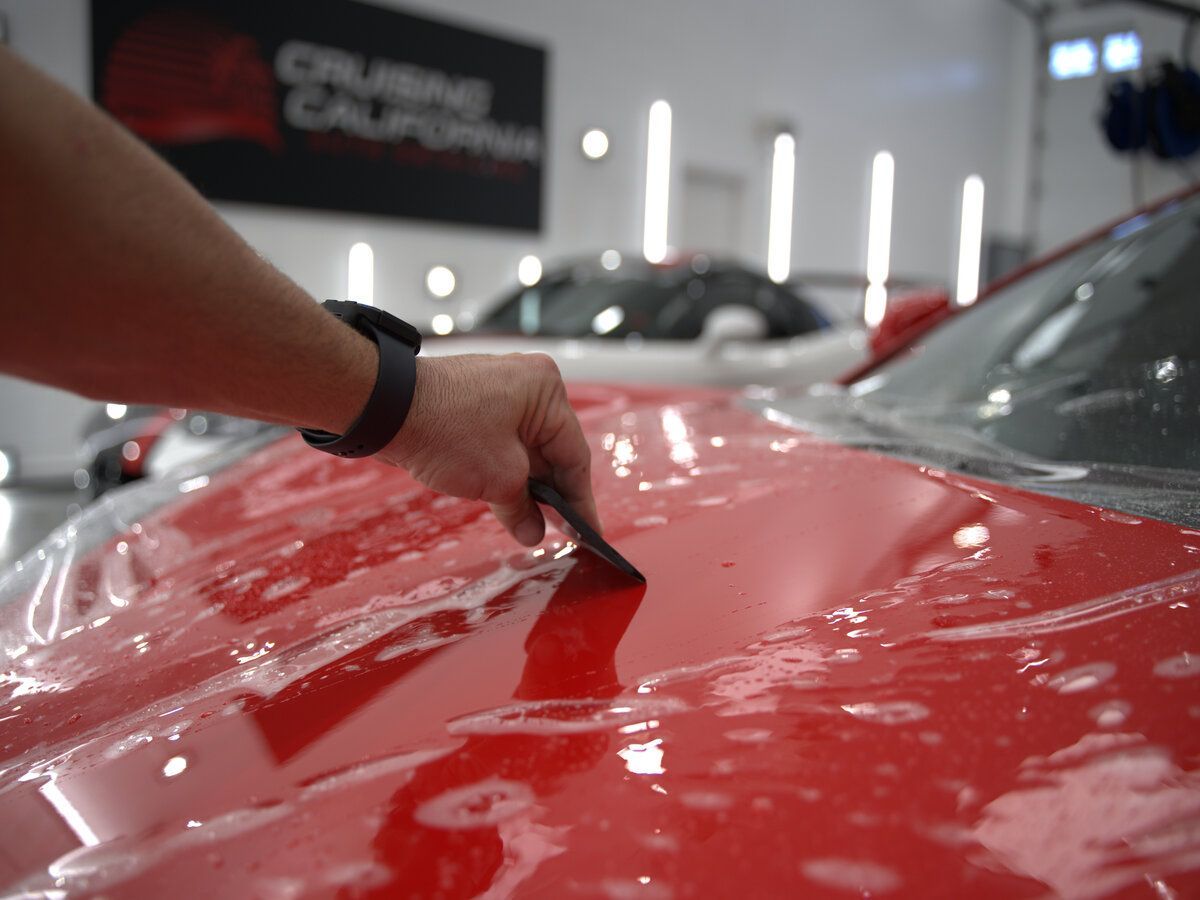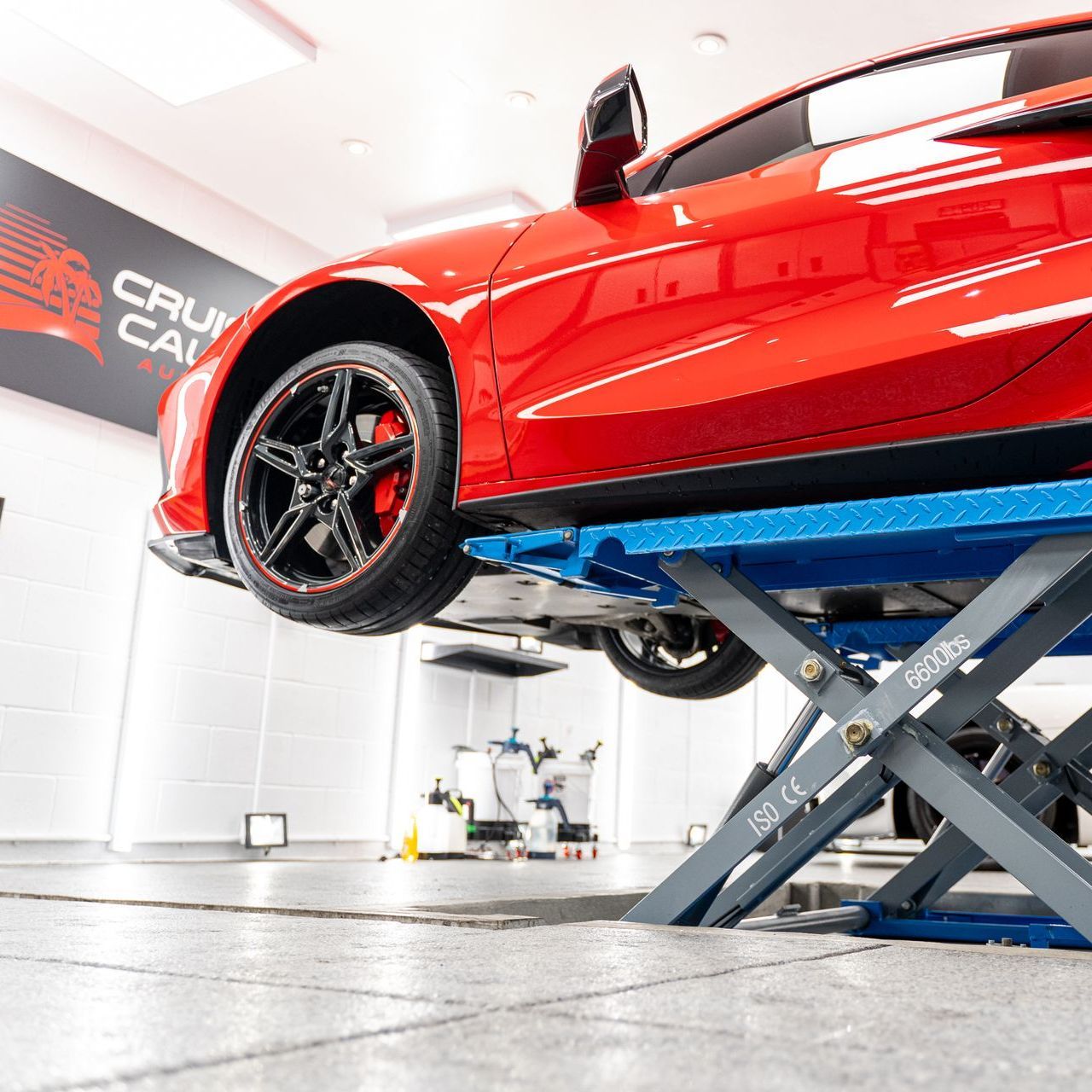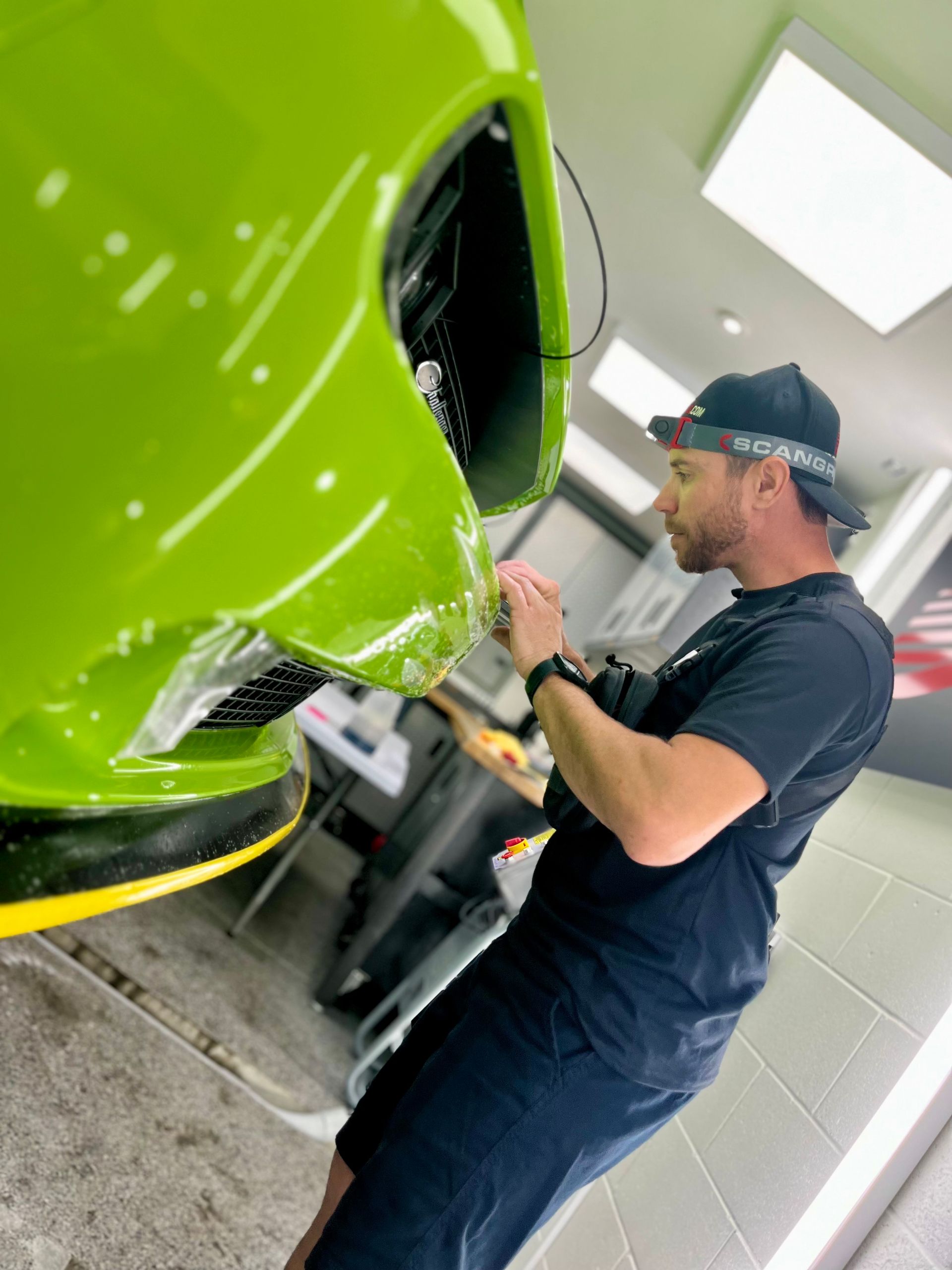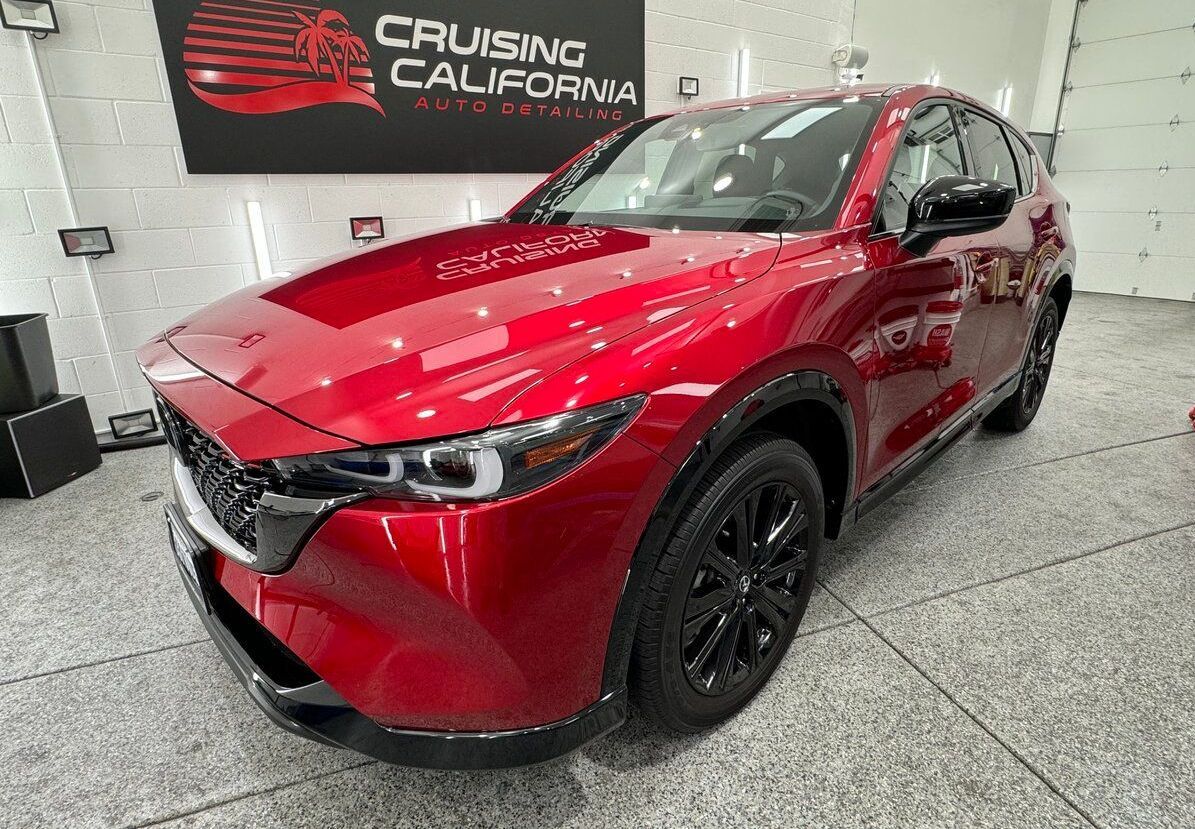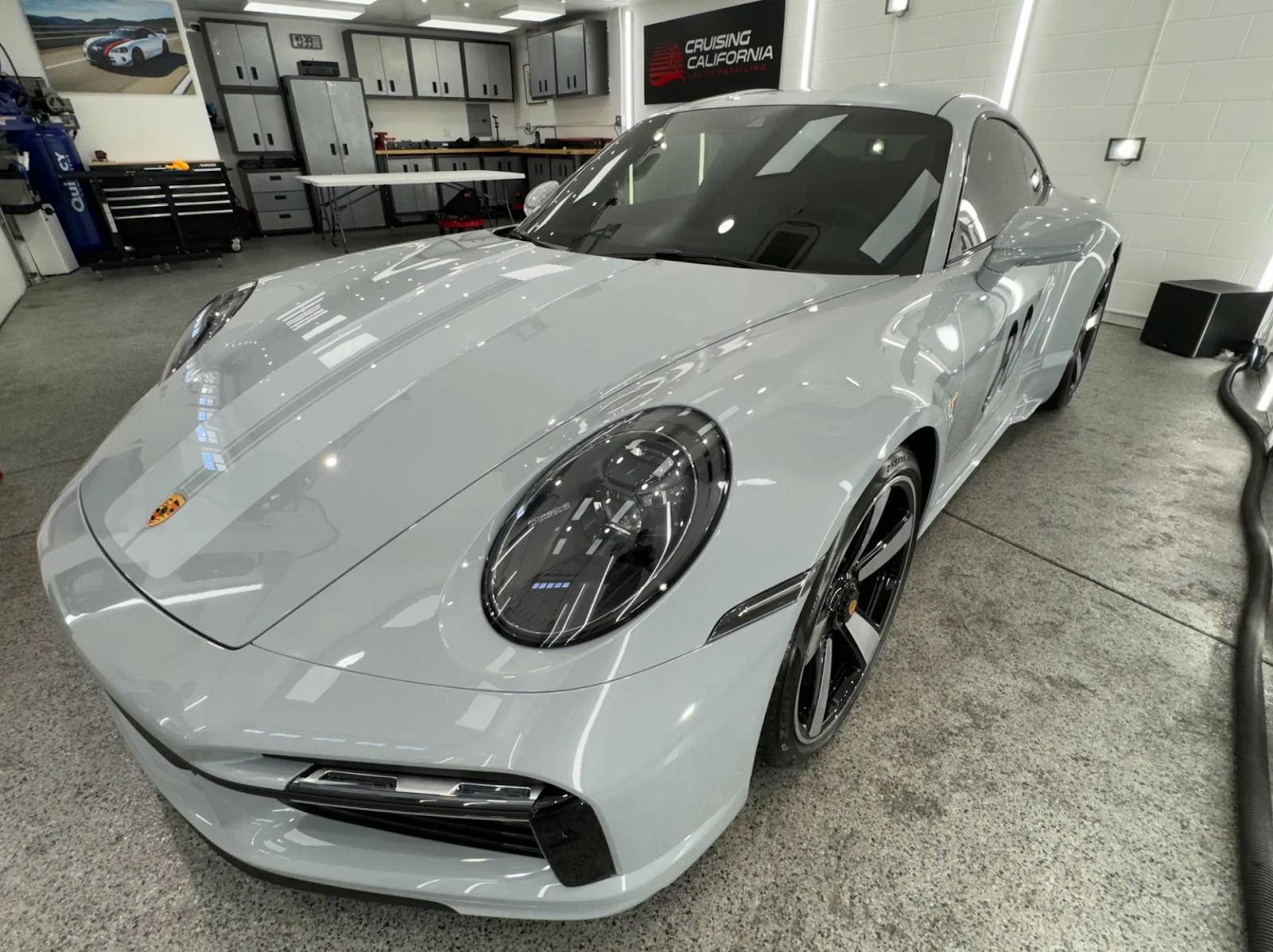Navigating the world of car care often brings you face-to-face with a barrage of contradictory information, especially about paint protection films. With so many sources claiming different things, it's no wonder there's confusion. For instance, the assumption that PPF is only for high-end vehicles or that it visibly ruins your car's aesthetic value needs thorough examination. However, modern advancements in material technology tell a different story. By digging into real-life user experiences, we've uncovered valuable insight that debunks these myths.
In our article "Debunking Common Paint Protection Film Myths," we address misconceptions such as paint protection film causing damage to the original paintwork, being visible on the car's surface, and hindering a vehicle's aesthetics. We provide authoritative explanations to dispel these myths and offer clarity on the benefits of paint protection film for your vehicle.
Addressing Common Myths About PPF
One of the most widespread myths concerning paint protection film is that it's exclusively meant for luxury or high-end vehicles. This couldn't be further from the truth. PPF is not discriminatory; it provides a protective layer for all types of vehicles, be it a premium brand like Mercedes or an everyday vehicle like a Toyota Camry. It doesn't discriminate between car models when it comes to its primary function: safeguarding and maintaining the value and appearance of your vehicle, regardless of its price.
Myth: PPF is Only for Premium Cars
Some may believe that protecting a high-end vehicle is more worthwhile compared to a less expensive model. However, this myth overlooks the fact that a paint protection film offers benefits such as preventing damage from road debris, scratches, and environmental hazards to any car it's applied to. Just as fine art deserves a protective frame, any vehicle can benefit from the added protection that PPF provides. By preserving the vehicle’s value and appearance over time, a paint protection film becomes a practical investment for any car owner. Think of it as sunscreen for your car's paint, shielding it from harmful ultraviolet rays and environmental contaminants, irrespective of whether it's a top-of-the-line luxury sedan or an everyday commuter vehicle.
Myth: PPF Turns Yellow Over Time
It’s true that in the past, some lower-grade films made with PVC were prone to discoloration. However, modern PPFs utilize advanced materials like high-quality aliphatic TPU that resist yellowing and degradation far better than older films. These materials are engineered to maintain their clarity and transparency over time while offering superior protection against fading. By leveraging these high-quality materials, your paint protection film can maintain the original color and finish of your vehicle's paintwork without any yellowing or degradation. Consider high-quality aliphatic TPU as a clear coat that safeguards your car's paintwork against UV exposure and environmental contaminants without compromising on its appearance.
Myth: PPF is Noticeable and Ruins Car's Look
The truth is that high-quality paint protection films, when applied correctly by professionals, are virtually invisible. It enhances, rather than diminishes, the beauty of your vehicle's paint. In fact, some paint protection films even come with a glossy finish option, adding an extra shine to your car’s appearance while offering protection against minor scratches and chips. With advancements in technology, high-quality PPF can seamlessly blend with your car’s original color and finish without detracting from its aesthetic appeal.
So, if someone tells you that PPF ruins a car’s look, remember that high-quality paint protection film has the power to enhance it. In light of these clarifications, it’s clear that paint protection film is not just limited to exclusive cars and does not compromise the aesthetics of your vehicle when installed by professionals using advanced materials.
Does PPF Prevent Scratches and Rock Chips?
You might question the effectiveness of paint protection film in preventing scratches and rock chips. PPF is indeed designed to act as a shield, absorbing the impact of road debris, minor abrasions, and other environmental hazards that can harm your car's paintwork. When you drive, your car is exposed to a lot of hazards from the road—think tiny rocks being flung up by other cars or even rough branches scraping against your vehicle. A paint protection film serves as a sacrificial layer, absorbing these impacts so that the underlying paint remains untouched. It's like having a superhero force field around your car! This means that while the PPF might get scuffed or show signs of damage, your car's paint remains unharmed.
If you're still unsure about the effectiveness of PPF, consider this real-life example: A study comparing cars with and without PPF over six months revealed a significant difference in the visibility of scratches and chips. The cars with paint protection film had noticeably fewer visible signs of damage compared to those without it. This clearly showcases the practical effectiveness of PPF in shielding your car from everyday wear and tear. It's important to note that while a paint protection film does provide significant protection against minor physical damage, no material can make a car completely impervious to all potential harm.
Imagine two identical cars driving side by side for several months. One has a paint protection film installed, while the other does not. After this time period, the car without PPF shows visible signs of wear in the form of scratches and rock chips on its paintwork. Conversely, the car with a paint protection film looks pristine and nearly untouched by comparison. This simple yet impactful example demonstrates the tangible benefits of investing in high-quality paint protection films for your vehicle.
Can Paint Protection Film Damage Car Paint?
It’s easy to understand where the misconception about paint protection film damaging car paint comes from. Your car's paint is precious, and understandably, you’d want to take all the necessary precautions to protect it. However, when it comes to high-quality paint protection film, any concerns about potential damage to your car’s paintwork are simply misplaced.
Quality PPF, made from advanced aliphatic thermoplastic polyurethane (TPU) or polyethylene formulations, is designed to safeguard your vehicle without compromising its appearance. The adhesives used in these top-tier films are engineered to establish a strong bond with the paint, offering outstanding protection against scratches, chips, and environmental damage. Moreover, modern paint protection films can be safely removed without harming the original paintwork, which means you can keep your car looking its best throughout its lifetime. When we hear about paint protection film causing damage, it's important to consider that such issues primarily arise from using inferior products or improper installation techniques.
Consider this scenario: You wouldn’t blame a reputable car manufacturer for the faults of an unreliable third-party imitation. In the same way, the real culprit behind any potential damage associated with PPF is not the technology itself, but rather the use of low-quality products and erroneous application methods. This emphasizes the vital role of professional installation. DIY installation of paint protection films is not recommended, as it requires expert hands and a controlled environment to ensure flawless application. Selecting top-quality PPF products and entrusting their installation to skilled professionals substantially minimizes any risks.
Think of it this way: Just as a skilled surgeon uses cutting-edge tools and techniques to perform a delicate operation, a seasoned professional with quality materials ensures that the paint protection film application enhances rather than detracts from your car's aesthetics. In summary, quality PPF does not damage car paint when installed correctly by professionals, and it can actually help preserve the original paintwork in the long run. Issues related to potential damage stem from subpar products and amateurish installation processes. By choosing high-quality materials and relying on experienced professionals for installation, you can rest assured that your car will benefit from the protective virtues of paint protection film without any adverse effects on its appearance or condition.
Maximize UV Protection with PPF
The sun’s rays don’t just make people throw on sunglasses and lather up with sunscreen; they can also damage the paint on your vehicle. Indeed, UV rays from the sun can cause fading and oxidation of the car’s paint over time. However, modern paint protection films play a crucial role in guarding against this very issue. They boast impressive UV filtering capabilities, blocking harmful UV rays that would otherwise contribute to color loss and dullness. This means that your car's vibrant color will be preserved for far longer than without the protection.
- Essential Preservation: As cars age, the original sheen and depth of color tend to get affected by prolonged sun exposure. Just like our skin, the paint on cars can also suffer from UV damage if not adequately protected. It's like putting good sunscreen on your car, but more stylish!
- Enhanced Longevity: Vehicles adorned with UV-resistant PPF offer a compelling example of what the technology can do. By applying this protective film, cars typically maintain their showroom shine for several years longer than those left unprotected. This means that your car will continue to retain its appealing appearance and noteworthy resale value, even after years of usage.
By leveraging the latest in paint protection film technology and its UV-blocking properties, you're essentially safeguarding your car's exterior against one of its most formidable foes – the relentless sun. This simple yet effective shield is a wise investment that pays dividends by preserving your car's aesthetic appeal over time.
Proper Application and Installation of PPF
Applying paint protection film is a meticulous process that demands precision and attention to detail to achieve the desired results. When done correctly, a paint protection film can provide unparalleled protection for your car's paintwork. Let's walk through the key steps involved in the seamless application of PPF.
- Surface Preparation: The first imperative step in PPF application is ensuring that the car's surface is flawlessly prepared. This involves meticulously cleaning the surface to remove any dirt, debris, or wax that may hinder adhesion. Imperfections such as scratches or blemishes in the paint must be corrected before the film is applied. This meticulous preparation sets the foundation for a smooth and durable application of the paint protection film.
- Temperature and Environment Control: Maintaining control over temperature and environmental conditions during PPF application is critical to ensuring optimal results. The ideal temperature for applying paint protection film ranges between 60 and 80 °F. This range makes sure that the adhesive on the film clings to the car's surface firmly without suffering damage from extreme temperatures. Moreover, performing the application in a controlled environment minimizes the risk of dust or debris contaminating the adhesive, leading to a flawless finish.
- Professional Installation: While some may be tempted to opt for a DIY approach, professional installation offers several distinct advantages. Certified professionals possess specialized training, experience, and access to advanced tools and equipment, allowing them to apply the film with precision and expertise. Their expertise ensures that the film is applied seamlessly without unsightly bubbles or wrinkles that may compromise its effectiveness. Additionally, professional installers can tailor the application to specific areas of the car that are most susceptible to damage.
For instance, an experienced installer can efficiently navigate complex contours on a car's exterior, ensuring a snug fit without compromising the film's protective qualities. This level of finesse and attention to detail underscores the value of professional installation. By adhering to these crucial steps, vehicle owners can maximize the protective benefits of paint protection film while ensuring a visually appealing, seamless finish that enhances the overall aesthetics of their vehicle.
Maintaining and Waxing Your PPF
Regular maintenance is essential for ensuring the durability and effectiveness of your paint protection film. Let's elaborate on the steps required for proper maintenance and waxing of your PPF to keep it looking immaculate and functioning at its best.
- PPF Maintenance: It's crucial to clean your PPF regularly to preserve its protective properties. Begin by using a mild detergent and water solution for routine cleaning. Avoid harsh chemicals that could degrade the film's integrity, potentially leading to damage. Steering clear of these harmful substances enhances the longevity of your paint protection film while keeping it looking pristine.
- Waxing PPF: Waxing your paint protection film adds an extra layer of protection, reinforcing its hydrophobic properties and making maintenance easier. When choosing waxes and sealants for your PPF, ensure they are specifically designed for use with paint protection film. These specially formulated products enhance the film's ability to repel water and help maintain its glossy finish over time.
- Longevity of Well-Maintained PPF: Statistical data suggests that well-maintained paint protection film can last an impressive 3 to 7 years. This underscores the significance of proper care and maintenance in realizing the long-term benefits of your vehicle's paintwork. By following a consistent maintenance routine and employing suitable products for waxing, you're ensuring that your investment in PPF pays off for years to come.
With regular cleaning and careful waxing, you can significantly extend the life of your PPF while preserving the immaculate appearance of your vehicle. Taking these proactive measures not only safeguards your investment but also ensures that your car maintains a sleek, flawless look for years to come. Remember, consistent maintenance is key to reaping long-term rewards from your paint protection film.
TOP-notch PPF Services in El Cajon, CA
Enhance your vehicle's protection with CCA Detailing & Ceramic Coating | PPF, offering
top-notch paint protection film services in El Cajon, CA. Our top-of-the-line PPF solutions provide an exceptional barrier against scratches, chips, and environmental damage, ensuring your car remains in pristine condition. With a team of skilled professionals dedicated to precision and quality, CCA Detailing & Ceramic Coating | PPF delivers outstanding results that protect and preserve your vehicle’s beauty. Choose us for unparalleled PPF services and give your car the ultimate protection. Contact us today to schedule your PPF installation. Call us at
(619) 916-6157 to get started!

